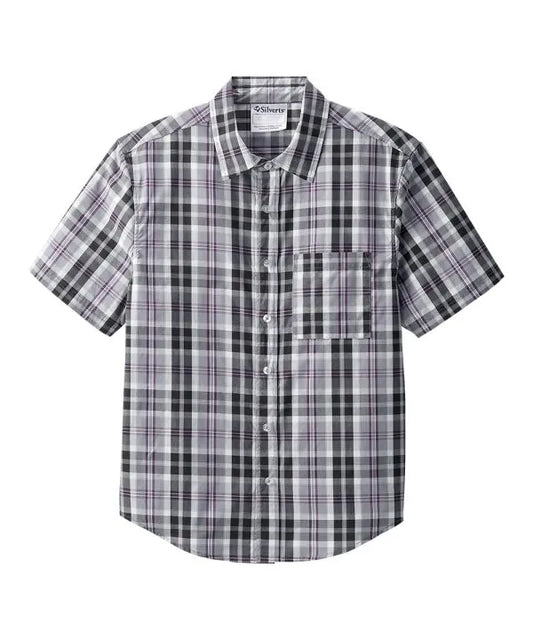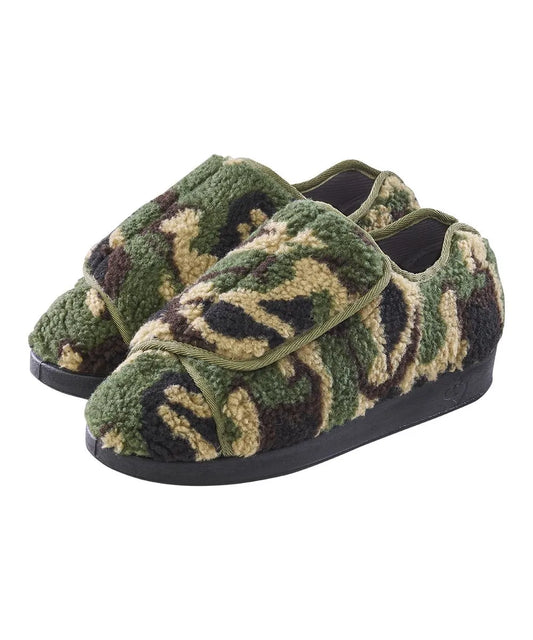In our diverse world, inclusivity and accessibility are of great importance. Adaptive clothing has emerged as a significant step towards ensuring that people of all abilities can comfortably and confidently express themselves through fashion. Among those who benefit greatly from adaptive clothing are amputees and prosthetic wearers. These individuals face unique challenges when it comes to dressing, but thanks to the innovation in adaptive clothing, they can now enjoy fashion without compromising on comfort or convenience. This blog explores the various types of adaptive clothing designed to cater to the needs of amputees and prosthetic wearers.
- Velcro and Magnetic Closures
One of the most common challenges for amputees and prosthetic wearers is the struggle with traditional button and zipper closures. Traditional closures require the wearer to perform complex hand and finger motions, while coordinating several actions at the same time. Adaptive clothing often replaces these with Velcro and magnetic closures, which are easier to fasten and provide individuals with a quick and hassle-free way to get dressed independently.
Velcro closures are highly adjustable, making them ideal for accommodating different body shapes and sizes. This adjustability ensures a snug and comfortable fit, regardless of variations in limb size or shape. Amputees can also fine-tune the fastening to suit their unique needs. Adaptive clothing designers have incorporated Velcro closures into a wide range of garments, from casual wear like T-shirts and running shoes to more formal attire such as dress shirts and slacks. This large array of options ensures that amputees and prosthetic wearers can maintain their personal style, while enjoying the benefits of Velcro closures.
Magnetic closures, on the other hand, are a great option for people with limited hand dexterity, as they require minimal effort to secure and are exceptionally easy to use. They rely on the power of magnets to secure the garment in place - a simple touch is often all that's needed to fasten or unfasten magnetic closures. Additionally, magnetic closures are strategically placed for accessibility, often hidden behind fabric or discrete flaps. This ensures that the magnetic fasteners serve their purpose while maintaining a sleek and fashionable appearance. Adaptive clothing designers have incorporated these closures into a wide range of garments, from casual wear to formal attire.
- Pull-on Pants and Skirts
For amputees and prosthetic wearers, one of the most significant challenges when it comes to clothing is the struggle with traditional closures like buttons and zippers. Thankfully, pull-on pants and skirts have emerged as a solution, offering a blend of style and comfort that simplifies the dressing process. For example, June Adaptive offers a pair of Men’s Pull-on Cargo Pants that features internal pull-up loops and a full elastic waistband.
The hallmark of pull-on pants and skirts is their elastic waistbands or drawstrings. These features allow individuals to effortlessly slide the garment on and off without the need for buttons, zippers, or belt loops. The absence of rigid waist closures translates to enhanced comfort - there are no uncomfortable pressure points, and the elastic waistband gently conforms to the wearer's body, providing a secure yet comfortable fit. Pull-on pants and skirts are also designed to adapt to various body shapes and prosthetic devices. The flexibility of these waistbands ensures that the clothing remains accommodating and comfortable throughout the day.
Moreover, adaptive clothing designers understand the unique needs of amputees and prosthetic wearers. Some designs include discreet openings or adaptations that allow individuals to insert and secure their prosthetic limbs with ease. These features ensure that the prosthetic device remains in place while maintaining a polished appearance. To cater to different body proportions and prosthetic heights, some pull-on pants also have adjustable lengths or hemlines. This customization ensures a proper fit and eliminates the need for costly tailoring.
- Adaptive Footwear
Choosing the correct footwear can be a daunting task for amputees and prosthetic wearers, but adaptive footwear options have expanded significantly in recent years. Adaptive shoes are designed with features that make them easier to put on and take off, providing comfort and support throughout the day. Particularly, slip-on shoes, footwear with Velcro closures, and wide openings can be convenient solutions for amputees and prosthetic wearers.
Slip-on shoes with stretchy materials or elastic panels are a popular choice for amputees. They eliminate the need for laces and provide a secure fit, while remaining easy to manage. Their stretchy construction allows individuals to slide their feet into the shoes without the hassle of traditional fasteners. The elastic elements also ensure that the shoes stay snugly in place, preventing any discomfort or instability during walking or other activities.
Footwear with Velcro closures is another practical option, as they allow for easy adjustments and secure fastening. These shoes come in various styles, from sneakers to dress shoes, ensuring a broad selection for different occasions. Velcro closures are also highly adjustable, allowing wearers to fine-tune the fit to their specific needs. This is especially beneficial for accommodating prosthetic limbs or orthotic devices, ensuring a snug and comfortable fit. Moreover, Velcro closures empower individuals with limited dexterity to fasten and unfasten their shoes independently. This fosters a sense of autonomy and confidence in daily activities.
Some adaptive shoes have extra-wide openings, which makes it easier to accommodate prosthetic limbs or orthotic devices. This ensures that the shoe comfortably encases the entire foot while providing the necessary support. For example, June Adaptive offers a pair of Men’s Wide Easy-On Shoes. These types of shoes also prioritize comfort and accessibility without sacrificing style. They eliminate the struggle of squeezing a foot into a narrow shoe, ensuring a more relaxed and pain-free experience.

- Adaptive Undergarments
Undergarments are the foundation of any outfit, and adaptive undergarments are no exception. They are designed to provide support and comfort while addressing the specific needs of amputees and prosthetic wearers. They also eliminate the need for complicated hand and finger movements to secure the garment, which encourages independence when dressing.
Prosthetic bras are tailored to provide support and a natural appearance for women who have undergone mastectomy or breast reconstruction surgery, or for those struggling to secure the traditional hook mechanism. They feature pockets designed to hold breast prostheses securely, while offering support and a natural appearance. These pockets ensure that the prosthesis remains in place, preventing any shifting or discomfort during daily activities. Prosthetic bras also prioritize support and comfort. They often feature wide, adjustable straps and soft, breathable fabrics to reduce irritation and promote a comfortable fit throughout the day. These bras are also crafted to mimic the look and feel of a natural breast. This design helps individuals regain confidence and a sense of normalcy in their appearance after breast surgery.
Moreover, adaptive underwear is another type of undergarment commonly worn by amputees and prosthetic wearers. It often includes features like Velcro closures or side openings to facilitate dressing and minimize discomfort. These closures simplify the process of putting on and removing underwear, making it more manageable for individuals with mobility challenges. The side openings also allow for a more straightforward dressing process, ensuring that undergarments can be put on and taken off without hassle. For example, June Adaptive offers Women’s Open Front Underwear. Adaptive underwear also prioritizes comfort and ease of use. They are often made of moisture-wicking fabrics to keep the skin dry and prevent irritation. This is especially important for individuals who wear prosthetic devices, as moisture can lead to discomfort and skin issues.
- Prosthetic-friendly Swimwear
Water-based activities, such as swimming or lounging by the beach or pool, are beloved pastimes for people of all abilities. Prosthetic-friendly swimwear is designed to ensure that individuals with limb differences can participate in these activities comfortably and confidently. It addresses the specific needs of amputees and prosthetic wearers, ensuring they can confidently enjoy water activities without any discomfort or wardrobe malfunctions.
Prosthetic-friendly swimwear often includes strategically placed pockets or compartments designed to securely hold prosthetic limbs or swim covers. This ensures that the prosthetic device remains in place, even during vigorous activities. This prevents any unexpected dislodging or discomfort in the water. The pockets and compartments are also designed to be discreet, maintaining the aesthetics of the swimwear. They blend seamlessly into the garment's overall appearance, allowing individuals to feel confident and stylish while wearing them.
Moreover, many prosthetic-friendly swimwear designs feature adjustable straps, allowing wearers to fine-tune the fit of their swimwear, ensuring comfort and support. This feature is particularly essential for those with prosthetic limbs, as it helps maintain a secure fit.
Additionally, prosthetic-friendly swimwear often incorporates easy-to-fasten closures. These closures simplify the process of putting on and removing swimwear, which can be challenging for individuals with limited mobility. Fasteners can be Velcro or adjustable hooks that make getting ready for water activities quick and hassle-free. This is especially valuable when changing in and out of swimwear at the beach or pool. It can also promote independence since individuals can dress themselves without assistance, fostering a sense of autonomy and self-confidence.
By understanding the unique needs and challenges of amputees and prosthetic wearers, adaptive clothing designers continue to create functional and fashionable options that empower individuals to express themselves through clothing. From magnetic closures to adaptive undergarments, amputees and prosthetic wearers can maintain independence and find comfort in their clothes.

















